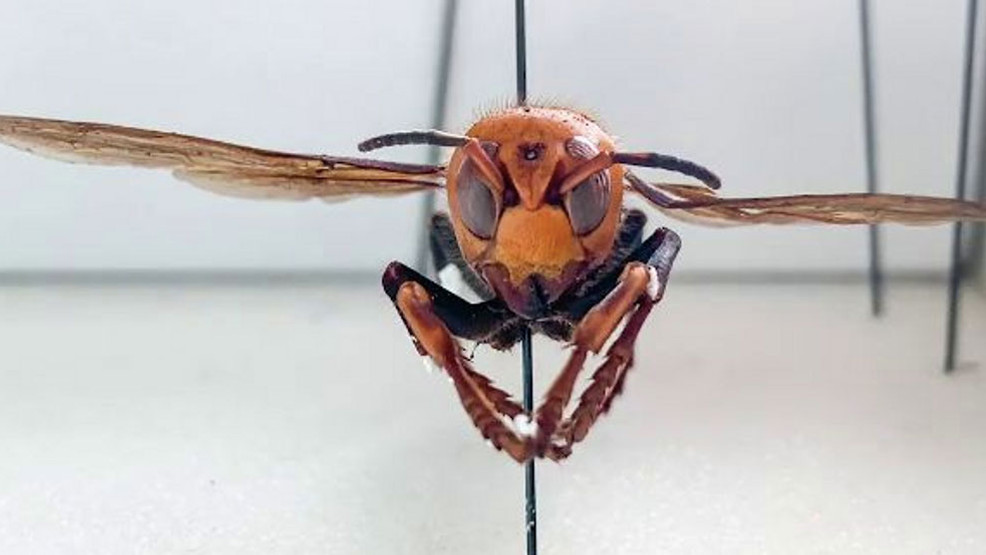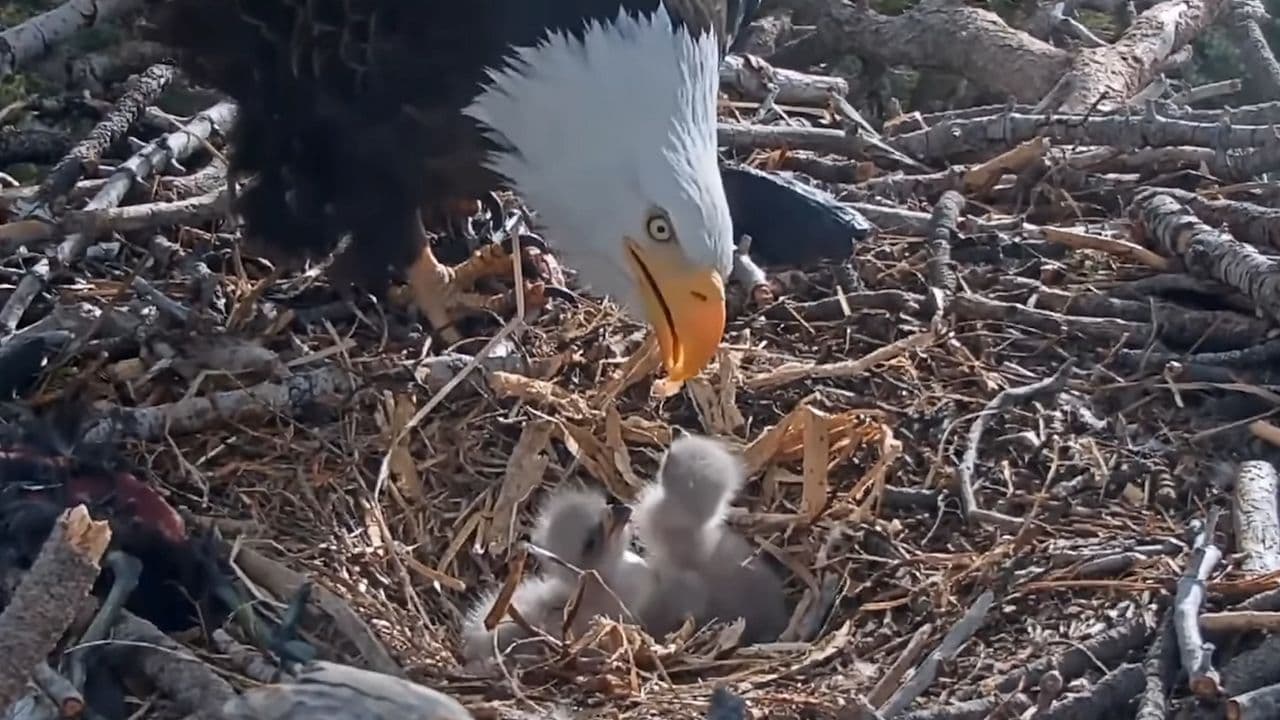
Amazing
Experts Share What It Feels Like to Experience Giant Murder Hornet Stings
Giant murder hornets, also known as Vespa mandarinia, have been in the news a lot lately. They have been recently spotted in the United States. These hornets were seen in Washington State back in December and it marks the first time they were documented in the U.S. British Columbia has also experienced a number of different spottings throughout last fall. Many experts believe these hornets ended up in the area through cargo transport.
The hornets pose a threat to the dwindling honeybee population in the United States and, since they have few natural predators, they can wreak havoc on other fragile ecosystems. These deadly hornets have also been known to kill dozens of people each year in Japan so they really are not kind to humans either.
On his show, Brave Wilderness, YouTube personality Coyote Peterson was actually stung on camera by a murder hornet. On the show, you can see him in pain and his hands begins to seize up. He later revealed that he was in pain for almost six hours. His arm ballooned up to twice its normal size. While a single sting isn’t likely to kill a human being unless there is an allergic reaction to the venom, 30 to 40 stings could in fact kill a human. Even if someone is not allergic to a hornet, the sting is incredibly painful and does have a lot of neurotoxins.
A murder hornet has also stung Conrad Berube, an insect expert. He was stung through a beekeeping suit and was also stung through two pairs of pants and the hornet drew blood in two different places. He later said that the day after he was stung, he felt like he had the flu with leg aches. He has said the sting was the most painful of any stings he has experienced.
The hornets have a longer stinger than a honeybee does. Hornets don’t break off their stingers when they sting. Since the hornet stingers can puncture thick clothing it’s best to avoid hornets and the nest when possible. The hornets are also attracted to tree sap. You could be stung by one while close to a tree. Avoid wearing dark clothing since hornets are more attracted to it and if you are going to be outside, avoid carrying any open top sweet drinks, such as a soda, in order to try and prevent these painful stings from happening.
These hornets are typically between 1.5 and 2 inches long and have large orange-yellow heads, along with prominent eyes and a yellow and black striped abdomen. The hornet’s life cycle begins in April. When the queen wakes up from her hibernation, she begins to scout out different spots to grow colonies and build underground nests. Murder hornets are the most dangerous during the late summer and early fall and this is when they are likely to do the most damage to honeybee populations. The hornets end up attacking the beehives and then decapitate and kill the adults. They do so while eating the larvae and pupae. It only takes a few hornets to destroy an entire hive in just a few hours. The hornets usually nest in the mountainous regions of Asia and it’s not often they are found in urbanized areas or large cities. The nest is typically found at the base of large trees and they aren’t able to tolerate extremely cold or hot temperatures, which gives some hope that they may not spread in certain climates in North America.
Currently, officials in Washington State are tracking the insects and using traps to ease some of the potential harm.
Amazing
From Wheels to Wonder: Paralysed Skater Transforms Old Boards into Bold Sculptures

When Nick Harding lost the ability to skateboard, he never imagined he’d find a new way to stay connected to his lifelong passion — through art.
In 2019, Nick was suddenly paralysed by Guillain-Barré syndrome (GBS), a rare auto-immune condition where the immune system attacks the nervous system. What started as a sore hamstring quickly escalated into a medical emergency. Within an hour of arriving at the hospital, he was on life support. He spent 13 weeks in intensive care at Southmead Hospital in Bristol and seven months in recovery, relearning how to walk and use his arms.
“Skating has always been a huge part of my life,” Nick said. “Having an outlet for that desire to play with my favourite toy is what brought the sculptures about.”
With his old decks stacked in a corner and his body still rebuilding strength, Nick began experimenting. His early attempts to make practical items were shaky — his hands lacked coordination — so instead, he focused on creating something beautiful. With no prior carpentry experience, he turned to YouTube tutorials, teaching himself to shape, sand, and finish colorful, psychedelic forms from the layered wood of worn-out skateboards.
The process helped rebuild his dexterity, but it also served as a mental anchor. “I just focused on doing a little bit every day,” he said. “It was the process that felt good when I was at my lowest.”
Now, Nick sells his sculptures through his Etsy shop Mobius Maples and has gained fans from around the world. His pieces — all carved from donated, broken, or retired boards — are abstract, swirling forms that capture the movement and spirit of skateboarding.
But for Nick, it’s not just about the art or even the recovery. It’s about staying connected to the Bristol skate scene that shaped him. He donates pieces to skate competitions and charity auctions and even hides small keychains around the city for his Instagram followers to find.
“It wouldn’t be anything if it was just me,” he said. “It’s also people who give me their old boards. Interacting with the art and letting me be involved with things is what’s kept it going.”
“I want it to be something that adds to the community, and I’m so grateful that I still have the opportunity to do that.”
Through creativity, community, and resilience, Nick Harding has transformed adversity into something both healing and inspiring — turning the boards that once carried him across pavement into lasting works of art.
Amazing
Community Petition Saves Wally the Beaver from Euthanasia

Wally, a beloved beaver who became a community favorite in Northern Virginia, was saved from euthanasia thanks to the efforts of thousands of supporters who rallied together through an online petition.
Wally first gained popularity at Huntley Meadows Park in Fairfax County, where locals and visitors often saw him hard at work building dams. However, wildlife officials considered euthanizing him after concerns arose over flooding and tree damage caused by his dam-building activities.
The community swiftly stepped in, launching a petition that quickly gathered over 10,000 signatures. Advocates argued that the beaver’s positive impact on the ecosystem—creating wetlands and habitats for other wildlife—far outweighed any inconveniences.
Local officials eventually agreed, opting instead for a humane relocation effort. Wally will now be safely moved to a suitable habitat rather than being euthanized.
“This shows how much our community values wildlife,” said Julie Ames, the petition’s creator. “We’re thrilled our voices were heard.”
Residents celebrated the decision, highlighting how Wally’s survival symbolizes the growing awareness of peaceful coexistence with local wildlife.
Amazing
Third Eaglet Joins Big Bear’s Beloved Bald Eagle Family

A third eaglet hatched yesterday in the much-loved bald eagle nest near Big Bear Lake, marking a delightful moment for the growing number of wildlife enthusiasts who have been closely watching the family online.
The nest, located in the San Bernardino National Forest near Big Bear, California, has been streaming live via the Friends of Big Bear Valley eagle cam. Observers were excited to witness the third chick hatch, a significant event considering that bald eagles usually lay two eggs, with three being somewhat unusual.
The parents, affectionately named Jackie and Shadow, are local celebrities among bird watchers. According to the Friends of Big Bear Valley, these parents have gained fame for their caring behavior, ensuring their chicks remain healthy and thriving despite the occasional harsh weather conditions.
“The hatch was smooth and perfectly timed,” said Sandy Steers, executive director of Friends of Big Bear Valley. “It’s heartwarming to see this family continue to flourish.”
Wildlife experts emphasize the importance of maintaining a respectful distance, reminding the public that the best way to enjoy and protect these birds is by observing remotely via the eagle cam.
Viewers can continue to monitor the eaglets’ development, celebrating each milestone as the chicks grow into young eagles over the coming weeks.
Amazing
Pocatello’s Last Video Rental Store Preserves Tradition for Devoted Patron

In an era where digital streaming dominates, the closure of Video Stop marked the end of an era for Pocatello, Idaho. However, for one loyal customer, the spirit of the traditional video rental experience continues, thanks to the store owner’s thoughtful initiative.
For over 15 years, 35-year-old Christina Cavanaugh, who has Down syndrome and is mostly nonverbal, maintained a cherished routine of visiting Video Stop almost daily with her mother, Toni. This ritual was integral to Christina’s daily life, providing her with joy and consistency. The prospect of the store’s closure posed a significant disruption to her routine, causing concern for Toni about how to explain the change to her daughter.
Understanding the importance of this routine to Christina, Video Stop’s owner, David Kraning, decided to preserve a portion of the store’s collection. He dedicated a corner in his adjacent business, K & B Kwik Stop, to house these movies, ensuring Christina could continue her beloved visits. This thoughtful gesture not only maintained a sense of normalcy for Christina but also highlighted the deep bonds formed between local businesses and their patrons.
Toni expressed immense relief and gratitude for Kraning’s actions, likening the news to “being sentenced to prison and then getting a reprieve.” She praised the community-oriented approach of Kraning and his staff, who have always been attentive to Christina’s unique needs, even training new employees on how to interact with her during checkout.
While the era of video rental stores may be fading, the compassion and dedication demonstrated by Kraning ensure that, for Christina, the magic of selecting a physical movie remains alive. This story serves as a heartwarming reminder of the impact local businesses can have on the lives of their customers, going beyond transactions to form meaningful, supportive relationships.
Amazing
Former Student’s Surprise $1.8 Million Gift Stuns Wisconsin High School

In an age where school budgets are often stretched thin, a small-town Wisconsin high school received an astonishing financial windfall from a former student. Osceola High School, nestled in the tight-knit Village of Osceola, recently learned that a graduate from the Class of 1947, Millicent “Milly” Lindahl, left the school $1.8 million—with more still to come.
A Gift from the Past
Superintendent Becky Styles recalls the moment she learned of the unexpected donation.
“We were absolutely dumbfounded by the amount,” she said. “This doesn’t happen in public schools very often.”
While Milly Lindahl—who later became Milly Chapman—was not widely known in the community, her legacy is now impossible to ignore. A look through old yearbooks revealed she was an active student, participating in the drama club, yearbook committee, school newspaper, and even serving as a cheerleader.
After graduating in 1947, Milly moved away and lived a private life in Maple Grove, Minnesota, with her husband. With no children or immediate family, she made a decision that ensured her name would live on in Osceola—leaving her estate to the high school that had brought her joy in her youth.
Remembering Milly
While details of her later life remain scarce, Superintendent Styles and the local historical society have pieced together a portrait of a woman who cherished her high school years.
“I think it was a place where she found herself, where she could be who she wanted to be,” Styles said. “It was one of the happiest times of her life, and that’s what she held on to.”
Milly and her husband lived quietly, seemingly well within their means. Though her name may have faded from memory in Osceola, her generosity ensures she will be remembered for generations to come.
A Lasting Legacy for Students
Now, the school faces a major decision—how to use the money in a way that honors Milly’s legacy. While many ideas have been floated, Superintendent Styles emphasized that the funds should have a long-term impact rather than being used for short-term needs.
Possible projects include:
- A student commons area to foster community and connection.
- A performance space named in Milly’s honor, recognizing her love of drama and school activities.
- Scholarships or academic programs to support future students.
Before making any final decisions, the school plans to involve the community and wait for the estate to be fully settled.
One thing is certain—Milly Lindahl’s generosity will shape the future of Osceola High School, just as her time there shaped her.
-

 OMG7 years ago
OMG7 years agoA Couple Gave Birth to the Most Beautiful Twins Ever
-

 OMG7 years ago
OMG7 years ago20 Rare Historical Photos
-

 OMG7 years ago
OMG7 years agoHilarious Airport Photos
-

 Cute6 years ago
Cute6 years agoMom Refuses to Let Daughter Eat Sugar and Years Later This is What She Grows Into
-

 OMG6 years ago
OMG6 years agoTop Secret Air Force One Facts That You Never Knew
-
OMG6 years ago
The Funniest Yearbook Photos Of All Time
-

 OMG7 years ago
OMG7 years agoRetired Mathematician Restores Log Cabin
-

 OMG5 years ago
OMG5 years agoWhat Happened When This ‘Duck Dynasty’ Legend Chopped Off His Beard?